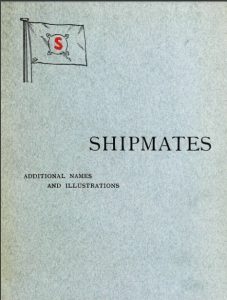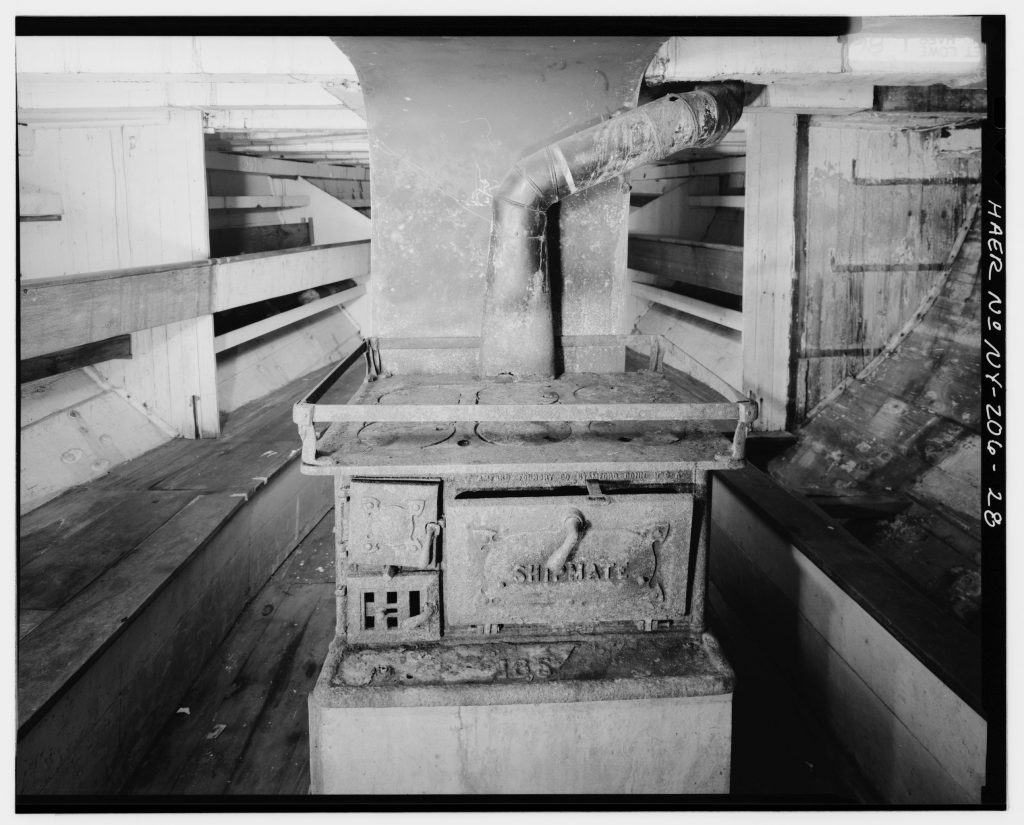By Edward T. Howe
For over a century, the Stamford Foundry Company made a variety of stoves found throughout the United States and foreign markets (e.g., South America and the Philippines). When it ceased operations in the mid-1950s, it was the oldest known stove works in America. Its Shipmate stove, used by both small and large sea-going vessels, helped the company to become a leading producer in the industry.
Rise of Stove Production in Connecticut

Cover of a promotional book issued by the Stamford Foundry Company that includes lists and photographs of ships that were furnished with a Shipmate range – Carnegie Library of Pittsburgh, Digital Public Library of America
Production of cast iron heating stoves in Connecticut first began in 1799 at the Lafayette blast (iron) furnace in Hydeville (Stafford). By the 1820s, various locations in New England were buying these stoves. The Lafayette blast furnace continued to produce them until about 1840 when the supply of iron ore ran out.
George E. Waring started the Stamford Foundry Company in 1830, making plowshares and other items in the town of Stamford. Six years later, he built a larger foundry in the same town where he began producing stoves, agricultural implements, fences, and grills. In 1849, after Waring retired, some of his former partners formed J. D. Warren & Company and moved to a canal location two years later. In 1869, the firm incorporated as the Stamford Foundry Company.
Various Stamford stoves and ranges made their way into homes, businesses, governmental offices, houses of worship, and even ships. In 1881, the firm began offering the Shipmate brand of cast iron stoves for private and public use on boats, ships, and large freighters. By the late 19th century, Stamford was also offering hot-air furnaces for sale. As Stamford became a leading producer, it made wood-, coal-, and oil-burning cast iron heating and cooking stoves and ranges in a variety of shapes and sizes. The company’s leading status culminated with the emergence of gas and electric stoves in the early decades of the 20th century.
An Increasingly Connected Market
As the market for stoves expanded, to reach retailing merchants, the firm relied on traveling salesmen—their illustrated pamphlets or catalogs showed model names, sizes of the ovens, and other features that differentiated its products from competitors. Moving these heavy, bulky, and expensive consumer durables from the foundry to these dealers was difficult. Transportation required reliance on both navigable waterways and, after 1870, the expanding railroad network.
The Stamford Foundry Company had various competitors during its existence. Notable late-19th century Connecticut competitors included the Robinson & Fowler Foundry Co. in Plainfield, the Richmond Stove Co. of Norwich, and both the N. L. Austin & Co. and the Arnold & Co. of Norwalk. In 1953, the City of Stamford bought The Stamford Foundry Company for $200,000 and turned the complex into a parking lot. The Marina Manufacturing and Supply Company of New Brunswick, New Jersey, acquired the assets of Stamford Foundry Company’s Shipmate brand in the same year but the Stamford Foundry Company name and reputation lived on in homes, businesses, and ships for years afterward.
Edward T. Howe, Ph.D., is Professor of Economics, Emeritus, at Siena College near Albany, N.Y.









